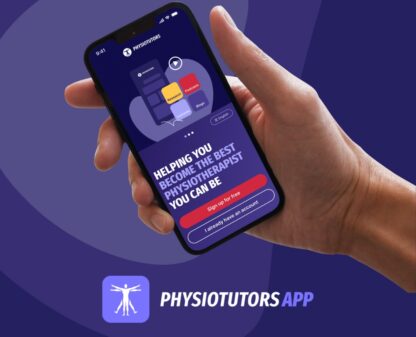Medication Overuse Headache

Introduction
- Definition: MOH is a secondary headache disorder caused by the regular overuse of headache medication. It occurs in patients with a pre-existing headache disorder.
Epidemiology
- Prevalence: Affects 1-2% of the general population, with women being 3 to 4 times more likely to be affected than men. The highest prevalence is around 40 years of age.
Clinical Presentation
- Diagnostic Criteria (ICHD-III):
- A. Headache occurs on ≥15 days/month in a patient with a pre-existing headache disorder.
- B. Regular overuse for more than 3 months of one or more drugs for acute and/or symptomatic headache treatment. Overuse is defined as intake on 15 days or more per month for simple analgesics (e.g., paracetamol, NSAIDs) and 10 days or more per month for triptans or similar medications.
- C. The headache is not better accounted for by another headache disorder.
Treatment
- Standard of Care: There is no universally accepted standard of care due to insufficient data from randomized clinical trials. Treatment success varies and is influenced by patient motivation, prior detoxification failures, comorbid psychiatric illnesses, and cultural factors regarding medication availability and cost.
- Recommended Management:
- Make a correct diagnosis and exclude other headache disorders.
- Educate the patient about MOH and the importance of medication withdrawal.
- Abruptly withdraw the overused medication, with or without rescue medication.
- Evaluate the need for prophylaxis prior to, at the onset of, or after drug withdrawal.
- Follow-up to prevent relapse and advise on future treatments.
- Withdrawal and Follow-up: Most patients can undergo outpatient withdrawal, but complex cases may require inpatient care. A consensus protocol suggests medication withdrawal, supportive treatment for withdrawal symptoms, early preventive medication, symptomatic treatment with a different medication than the one overused, and a 6-month follow-up period can benefit most patients.
References
Ekbom, K., & Hardebo, J. E. (2002). Cluster headache: aetiology, diagnosis and management. Drugs, 62, 61-69.
Fischera, M., Marziniak, M., Gralow, I., & Evers, S. (2008). The incidence and prevalence of cluster headache: a meta-analysis of population-based studies. Cephalalgia, 28(6), 614-618.
Fontaine, D., Lanteri-Minet, M., Ouchchane, L., Lazorthes, Y., Mertens, P., Blond, S., … & Lemaire, J. J. (2010). Anatomical location of effective deep brain stimulation electrodes in chronic cluster headache. Brain, 133(4), 1214-1223.
Goadsby, P. J., de Coo, I. F., Silver, N., Tyagi, A., Ahmed, F., Gaul, C., … & Ferrari, M. D. (2018). Non-invasive vagus nerve stimulation for the acute treatment of episodic and chronic cluster headache: a randomized, double-blind, sham-controlled ACT2 study. Cephalalgia, 38(5), 959-969.
Leone, M., D’amico, D., Frediani, F., Moschiano, F., Grazzi, L., Attanasio, A., & Bussone, G. (2000). Verapamil in the prophylaxis of episodic cluster headache: a double-blind study versus placebo. Neurology, 54(6), 1382-1385.
Manzoni, G. C., Camarda, C., Genovese, A., Quintana, S., Rausa, F., Taga, A., & Torelli, P. (2019). Cluster headache in relation to different age groups. Neurological Sciences, 40, 9-13.
Matharu, M. S., Levy, M. J., Meeran, K., & Goadsby, P. J. (2004). Subcutaneous octreotide in cluster headache: Randomized placebo‐controlled double‐blind crossover study. Annals of Neurology: Official Journal of the American Neurological Association and the Child Neurology Society, 56(4), 488-494.
May, A., Leone, M., Afra, J., Linde, M., Sándor, P. S., Evers, S., & Goadsby, P. J. (2006). EFNS guidelines on the treatment of cluster headache and other trigeminal‐autonomic cephalalgias. European Journal of Neurology, 13(10), 1066-1077.
Mir, P., Alberca, R., Navarro, A., Montes, E., Martínez, E., Franco, E., … & Lozano, P. (2003). Prophylactic treatment of episodic cluster headache with intravenous bolus of methylprednisolone. Neurological Sciences, 24, 318-321.
Navarro-Fernández, G., de-la-Puente-Ranea, L., Gandía-González, M., & Gil-Martínez, A. (2019). Endogenous neurostimulation and physiotherapy in cluster headache: a clinical case. Brain Sciences, 9(3), 60.ISO 690
Obermann, M., Holle, D., Naegel, S., Burmeister, J., & Diener, H. C. (2015). Pharmacotherapy options for cluster headache. Expert opinion on pharmacotherapy, 16(8), 1177-1184.
Olesen, J. (2018). International classification of headache disorders. The Lancet Neurology, 17(5), 396-397.


